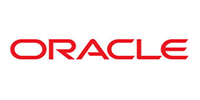Description
This training will allow you to acquire all the skills necessary for the efficient and reliable use of the product: relational principles, concepts and practice of SQL language, physical organization and transaction management. The main orders will be analyzed and implemented.
Who is this training for ?
For whom ?
IT professionals having to develop for Oracle or wanting a first approach to administration.
Prerequisites
Basic knowledge of programming.
Training objectives
Training program
- Introduction
- The Oracle server.
- The different versions.
- The different editions.
- The relational model.
- The notions of table and relationship.
- Integrity constraints.
- Tools.
- SQL Developer.
- The ISQL*Plus tool.
- SQL introduction.
- Oracle data types.
- Creating tables.
- Introduction to setting statements up to date.
- Using sequences.
- Introduction to querying (SELECT).
- Manipulating data.
- Introduction to transactions.
- Langage d'interrogation SQL
- Different SQL features.
- Sorting and removing duplicates.
- Functions and aggregates.
- Type conversion and NULL value.
- Queries on multiple tables.
- Joins. Nested queries.
- Set operators.
- Introduction to PL/SQL
- PL/SQL language instructions.
- Types of variables.
- Control instructions: conditions, iterations.
- Error management using the exception mechanism.
- Structuring PL/SQL programs.
- Procedures and functions.
- Definition and use of stored procedures.
- Specification of packages.
- Interaction with the database.
- Implicit and explicit cursors.
- Triggers LMD dans Oracle
- Presentation of Oracle triggers.
- Structure of a trigger (Event/Action).
- Types of LMD triggers (statement and row triggers).
- Actions of a trigger (automatic updating of data, cancellation of an illegal action, audit).
- Using triggers.
- Creation and use of instruction triggers.
- Use of line triggers: NEW and: OLD in these triggers Trigger management.
- Architecture and objects of a database
- Manipulation of tables. Creation of tables.
- Definition of integrity constraints.
- Deferred integrity constraints.
- Deletion of tables and the trash.
- Using temporary global tables.
- Using views and synonyms: creating and using views and synonyms.
- Organizing data: Oracle storage models. Definition and use of indexes.
- Data dictionary: Data dictionary tables and views.
- Transaction management
- Access to the database by transactions: partial cancellation of transactions. PL/SQL and transactions.
- Concurrency management and data locking. Characteristics of standard management.
- Read-only transactions, isolation levels, explicit locking.
- Security and users
- Access rights.
- Object privileges, system privileges and roles.
- Assigning and revoking access rights.
- Rights to stored views and processing.
- User management.
- User authentication.
- User profiles and resource usage limits.






